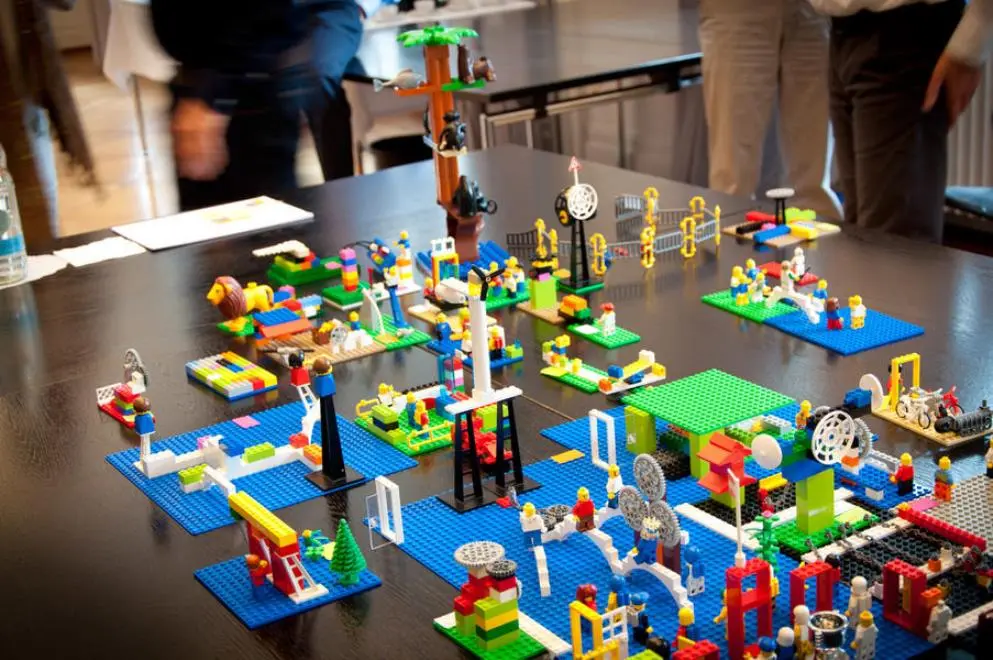Lego Serious Play

Background: Method for the joint playful development of problem solutions. Based on communication and collaborative imagination. Scientifically sound: Hand-brain coordination leads to better understanding of problems and pragmatic perspective on solutions.
Goal: Should lead to strategic decisions and problem solutions in a constructive way. Enables constructive splitting of problems into "comprehensible" parts.
Approach: 20 participants are 1) introduced to the method and topic. 2) The moderator presents the participants with the so-called challenge: in a given time the participants are to take a position on a problem. This could be: "Your superior presented the annual strategy today. What could be your contribution to success?" In response to this challenge, the participants develop a Lego model. At the end of this round, each participant is given a fixed amount of speaking time to present their model. 3) In the third phase, the participants enter into group work. Now the task is to present differences and to find a consensus. To do this, the moderator again gives an instruction: "Examine the models at hand for similarities. Build from this that the similarities add up. In the end, each of the participants must recognize themselves in the model. You have 30 minutes." 4) The documentation of the results is done in several ways. As photographs, flip charts and standardised protocols.
Advantage: Promotes creativity by modelling with the hands. Models simplify concrete communication about concrete aspects. Promotes team spirit and common understanding of problems.
Disadvantage: Requires experienced moderator. Acceptance of "children's toys" not always given. Playing can become more important than problem solving.